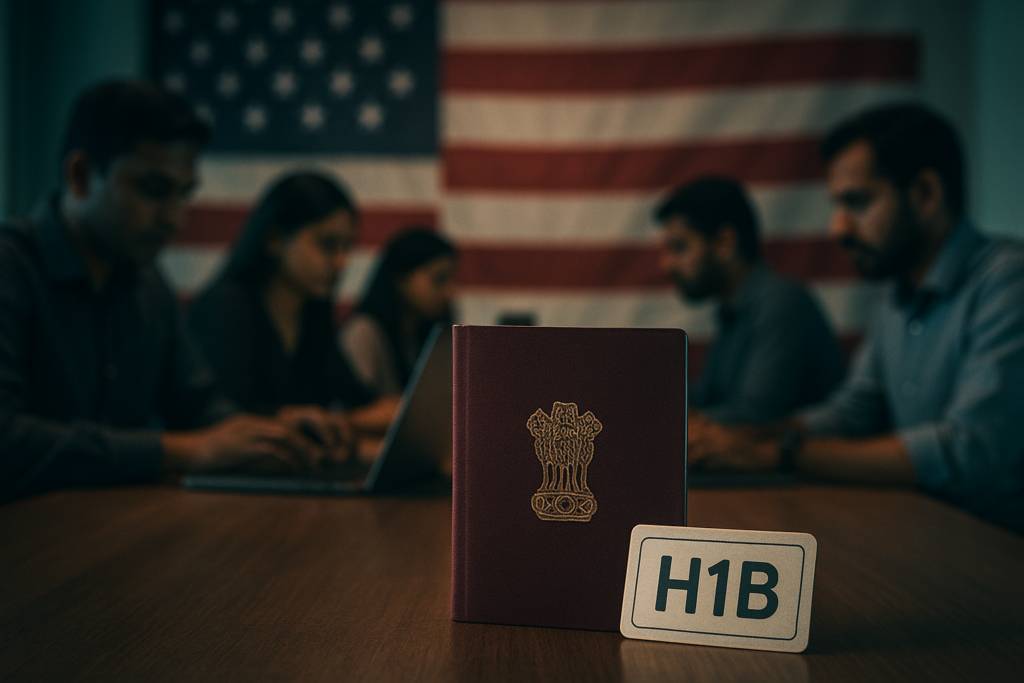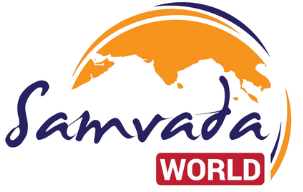
- President Trump’s administration introduced a $100,000 one-time fee for new H1B visa applicants under the “America First” policy, impacting mainly Indian and Chinese professionals but excluding existing visa holders.
- The hike poses major challenges for India’s IT industry, with analysts warning of an added cost burden of USD 150–550 million and a possible slowdown in software export growth below 4% in FY26.
- India’s government expressed concerns over economic and humanitarian implications, stressing the importance of skilled talent mobility and signalling the need for greater self-reliance amid global uncertainties.
- While short-term risks remain, the policy shift could push India to invest in domestic talent and innovation, reducing dependence on overseas markets and strengthening its own IT ecosystem.
President Trump’s administration has introduced another executive policy under which the visa fee for new entrants under the H1B category has been increased to $100,000 as a one-time fee. This move is another attempt under President Trump’s “America First” policy, which argues that immigrants, particularly those coming under H1B visas, of which around 70% are Indians and about 11% are Chinese, are taking away white collar jobs in the United States.
Initially, there was confusion and panic, with many believing that the new fee would also apply to existing H1B holders. Some even considered returning from the United States. However, the policy clearly applies only to new applicants and not to those already working in the US.
It is important to note that ever since President Trump came to power, there has been a growing debate around the H1B program. One catalysing factor was the appointment of venture capitalist Sriram Krishnan to lead the President’s AI policy framework. Following this, conservative activist Laura Loomer criticised the H1B system, claiming it was taking away American jobs. This sparked a broader debate in which figures like Elon Musk and Vivek Ramaswamy defended the program, stating that it helps the US attract the greatest minds from around the world.
President Trump has long been critical of the H1B program. During his 2016 campaign, he argued it was displacing American workers, and in 2020, he even introduced a temporary ban on issuing new H1B visas. Now, with his return to office, his administration has once again tightened the rules.
Impact On The Indian Industry
This major policy shift poses a significant challenge for India’s IT industry, which earns nearly 57% of its revenue from the American market. Analysts predict that Indian IT firms could face an additional cost burden of USD 150–550 million due to higher immigration fees under the new H1B regime. This has raised concerns about profitability, with estimates suggesting a 1–2% reduction in EBITDA margins if renewals or broader applications of the fees are enforced. According to Emkay Global, India’s software exports, valued at about USD 181 billion in FY25, may see growth slow to below 4% in FY26. While the US government clarified that the new fee applies only to fresh applications, the long-term risks for India’s IT services sector remain significant.
India’s Response
The Ministry of External Affairs (MEA) has responded to reports of proposed restrictions on the US H1B visa program, stating that the implications are being carefully studied in consultation with the Indian industry. Highlighting the importance of skilled talent mobility, the MEA noted that such exchanges have significantly contributed to innovation, economic growth, and competitiveness in both India and the US. It also cautioned that the move could disrupt families and expressed hope that US authorities would address these humanitarian concerns suitably. Prime Minister Modi has also taken cognisance of the matter, indirectly noting that, given the growing instability in the world, it is the right time for India to become more self-reliant.
The H1B visa debate has thus drawn mixed reactions. On one side, US critics argue that the program takes away American jobs, but it is worth remembering that the H1B was introduced precisely to attract global talent and make the US a hub of innovation. Global giants and other multinationals have significantly contributed to the US economy because of this program. Without it, America would not have achieved its current position as the global centre of talent and innovation.
While India faces short-term challenges, this development could also prove to be a blessing in disguise. It is a message for India to invest in its own ecosystem, retain talent within the country, and channel it toward strengthening the IT and industrial base. By creating the right platforms, India can transform this situation into an opportunity to boost its own economy and reduce dependency on overseas markets.
References:
- https://m.economictimes.com/nri/work/h1b-visa-100k-fee-gcc-opportunity-trump-may-have-just-dealt-india-60-billion-industry-a-winning-hand/articleshow/124062572.cms
- https://www.livemint.com/news/us-news/h1b-visas-new-rules-white-houses-karoline-leavitt-clarifies-wholl-be-charged-100-000-not-an-annual-fee-existing-hol-11758412038614.html
- https://www.indiatoday.in/india/story/indian-h1b-visa-holders-panic-trump-immigration-100000-us-dollars-visa-fee-big-tech-return-2790836-2025-09-21
Aayush Pal is a freelance writer on contemporary geopolitical developments. The views expressed in his work are entirely his own.
